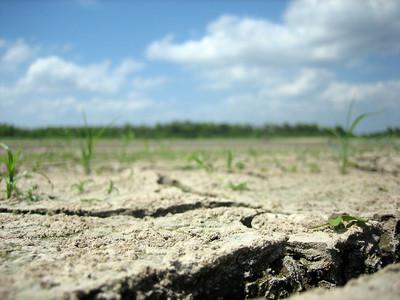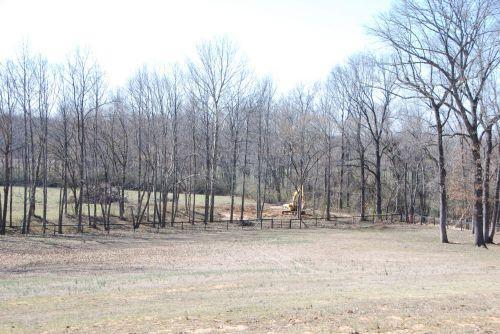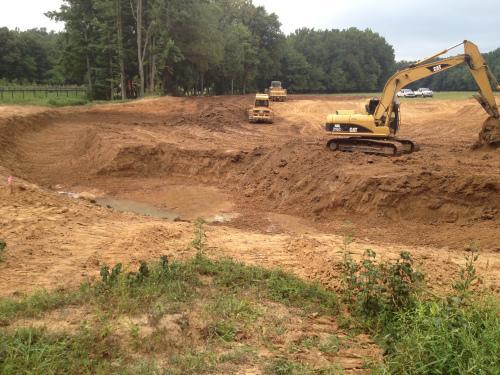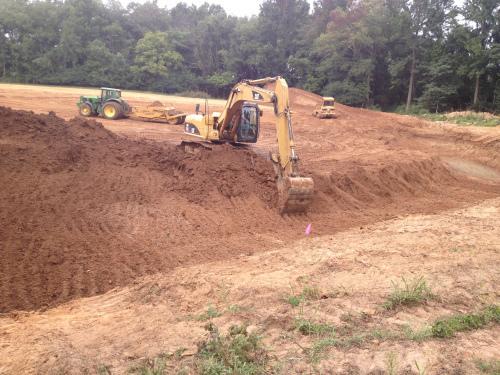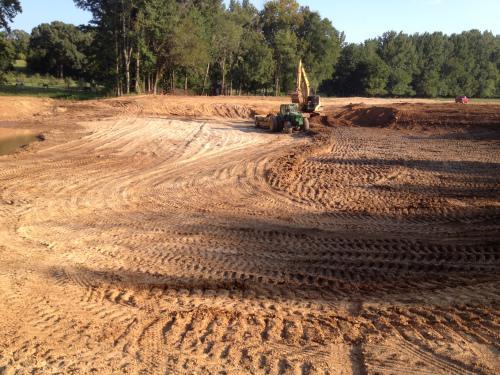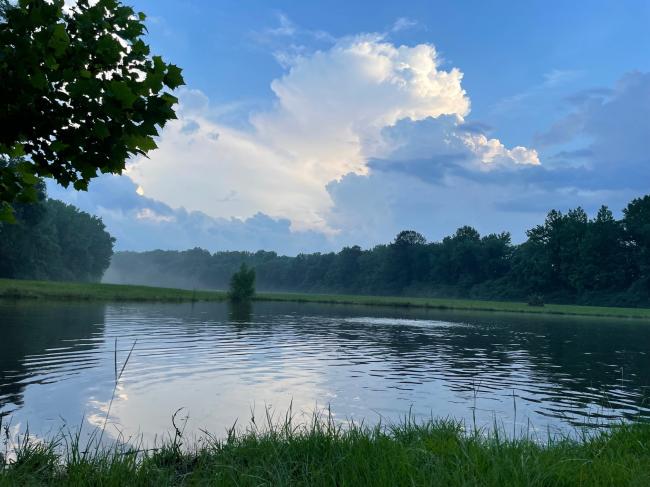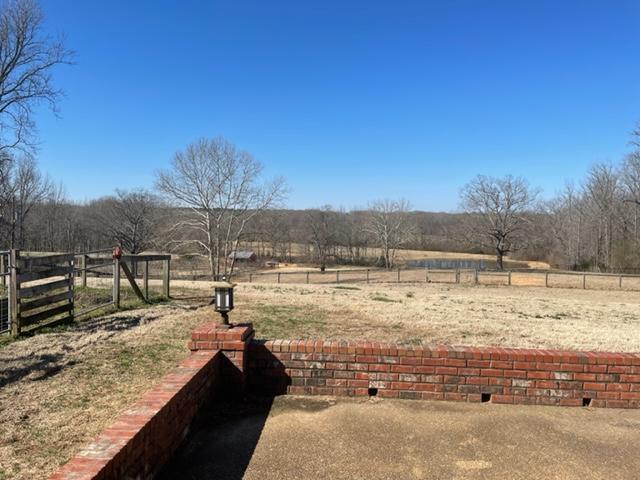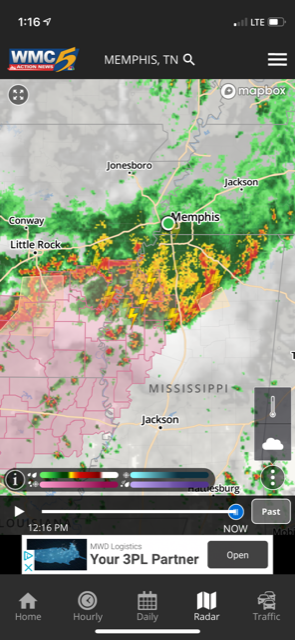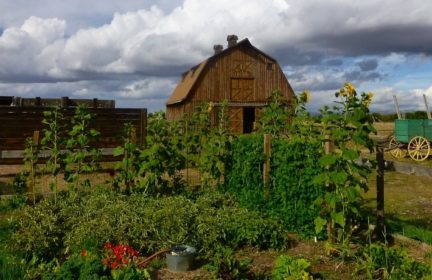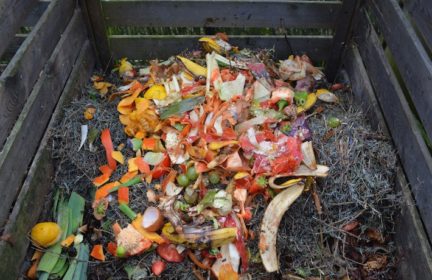Book Review: “The Drought-Resilient Farm”, by Dale Strickler
(image credit: “drought” by dasroofless is licensed under Creative Commons – CC BY-NC-ND 2.0)
In May 2015 a tornado hit Dale Strickler’s hometown and delivered four and a half inches of rain in 20 minutes.
While all of the neighbouring farms had water pouring off the field in several-foot-wide streams – Strickler’s field absorbed every drop of water.
For him this was the proof that his several-decade quest to improve land management and be better able to prepare for, avoid, and weather drought was paying off.
His techniques worked.
This book is a summary and synthesis of collected wisdom.
History
Strickler grew up on a farm in Kansas. In his youth he often watched his father work frustratingly hard on the family farm, only to have their crop ruined by drought. Strickler became an agronomist to better understand how to prevent, avoid, and combat drought. Decades later – after years of experience, experiments, education, and interviewing many drought survivors – he has been able to prove his techniques work. In one example, during a massive, historical drought in 2012, his fields were retaining moisture and his crops produced normal yields, while across the fence neighbour farm crops were dying.
Recipe
“The Drought-Resilient Farm” is a short, easy read. But the techniques and attitude changes it contains are invaluable.
As Strickler puts it himself, the recipe to avoid drought is deceptively simple:
- “Get water in”: Increase infiltration of rainfall into the soil, and decrease runoff. Capture the water you get.
- “Keep water in”: Increase the amount of water the soil can store.
- “Get water out”: Help the right plants use the water efficiently, when needed.
“Like so many other worthwhile endeavors, however, the devil is in the details”.
Proactive Prevention
Strickler’s book is divided into three parts. The first part details the proactive steps you can take to capture water, retain water, and use it well. This includes a practice of no-till (not breaking up the land). Despite some belief – tilling soil actually decreases its ability to absorb moisture. It also destroys organic matter. Strickler advises not tilling.
Next on the list is employing mulch: “Perhaps no other practice improves water movement into the soil surface more effectively than creating and maintaining a mulch layer”. Mulch absorbs the energy from falling rain, and prevents the impact from destroying the soil surface. This allows water to continue down into the soil when pore spaces are intact.
Finally Strickler is an avid fan of cover crops – using these to retain soil moisture; create a layer of surface mulch; and have a backup source for feed when needed. He goes into detail about many other practices – from diagrams of landforming terraces, retention dams, and vertical mulching; to the benefits of mycorrhizal fungi.
Strickler points to a very visible experiment – the USDA Rainfall Simulator – that makes it easy to see the results of his techniques. In one jar with common corn-growing agriculture techniques almost no water reaches below the soil. In another jar that follows Strickler’s regimen of soil care, nearly all of the water is kept.
On the topic of keeping water inside the soil, Strickler has advice about removing weeds (so they don’t use or transpire the moisture); planting perennials for windbreaks; interseeding plant types; and more uses for cover crops. He has been able to expand his soil’s water supply from storing 16 days of water during the peak summer season to storing 53 days of water. As you can imagine this allows plants to go much longer without rain before getting stressed or needing irrigation.
Finally Strickler discusses growing good, deep roots and breaking up the soil. He discusses *not* tearing up the land with subsoilers or machines; for the main limit on root growth depth is actually oxygen penetration. He has a good discussion on growing crops like radishes with large taproots to help break up the soil and get oxygen down inside.
Using What You Have
Part 2 of the book discusses management strategies for livestock, water supply, and feed. Strickler has many useful techniques to make the most of your land, plant, and feed resources in the correct order to avoid overgrazing and lengthen your drought-tolerance window. Again this includes interseeding various crops. Strickler’s strategies are a solid demonstration of the possible beneficial partnerships between plants, animals, and human stewards where resources can be reused and recycled, and the whole is better than the sum of the parts.
Finally Strickler concludes his book with a practical checklist of actions to take before, during, and after a drought to minimize impact. He provides a high-level plan for future agriculture in drought-prone areas. Each of the chapters ends with a clear and useful chapter summary that makes it easy to recall and use the important tips.
A Positive View For The Future
Strickler’s book is uplifting and encouraging: he views drought not as an unavoidable, entirely natural disaster; but as something mostly man-made. He lists the main causes of drought as destruction of vegetation and bad agricultural practice. This is encouraging – it suggests that we do indeed have the ability to improve our situation and reduce or avoid disaster ourselves, by planning smartly, and then working hard. It points to an opportunity for us to be good stewards of the earth. Indeed: it is telling that 95% of the book’s content deals with pre-planning and preparations to take *beforehand*, to mitigate drought and avoid it entirely. The remaining 5% of content is actions to take during the actual drought.
As someone who grew up on a farm – I highly recommend this book to anyone who has land, livestock, or access to a garden. All of the advice makes sense and is doable. Perhaps you can apply it in a community garden near you. I hope that by sharing the spirit and proven techniques of this book I can do a small part to raise awareness and help the whole planet improve resilience.
(edit: fix typo; add extra section header for easier reading)
—
-
Comments (13)
-
